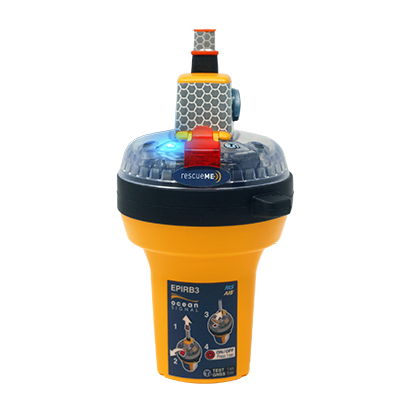
Blog
What is an Emergency Position Indicating Radio Beacon or EPIRB?
Staying true to Ocean Signal’s core design values, the EPIRB3 Series packs a comprehensive feature set (AIS, RLS, & NFC) into a compact, yet sturdy frame. Available as the EPIRB3 manual release or EPIRB3 Pro float-free version.
Shop now
Enter your location, so we can recommend local Ocean Signal dealerships and battery replacement centers.
Lives saved

Boat sinking

Crash or collision
“But the most important thing is, thanks to our EPIRB3's, we have our lives and each other. Now it's just one step at a time to recover and find our next life chapter.”
Read full story